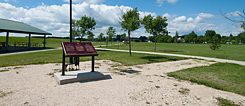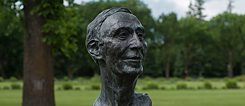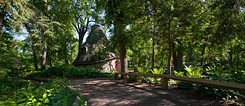On the traces of Germany in Winnipeg and surroundings
Did you know...
…that the old witch’s house from ‚Hansel and Gretel‘ stands next to the Red River in Winnipeg?
On the occasion of the centenary anniversary of the German community in Manitoba, the German architect Hans-Peter Langes designed an unconventional gingerbread cottage, made of candy and called “The Witch’s Hut”. Since 1970, it represents a part of the German fairy tale culture in Canada. A statue in the capital city of the province commemorates the well-known choreographer and director of the Royal Winnipeg Ballet, Arnold Spohr. Even the gourmand gets a treat here: The family-owned ‘Ralph’s German Restaurant & Café’ serves fresh German traditional meals and delicacies. The recipe for the best pumpkin seed bread in all of Winnipeg can be found at the German bakery ‘The Crusty Bun’.




